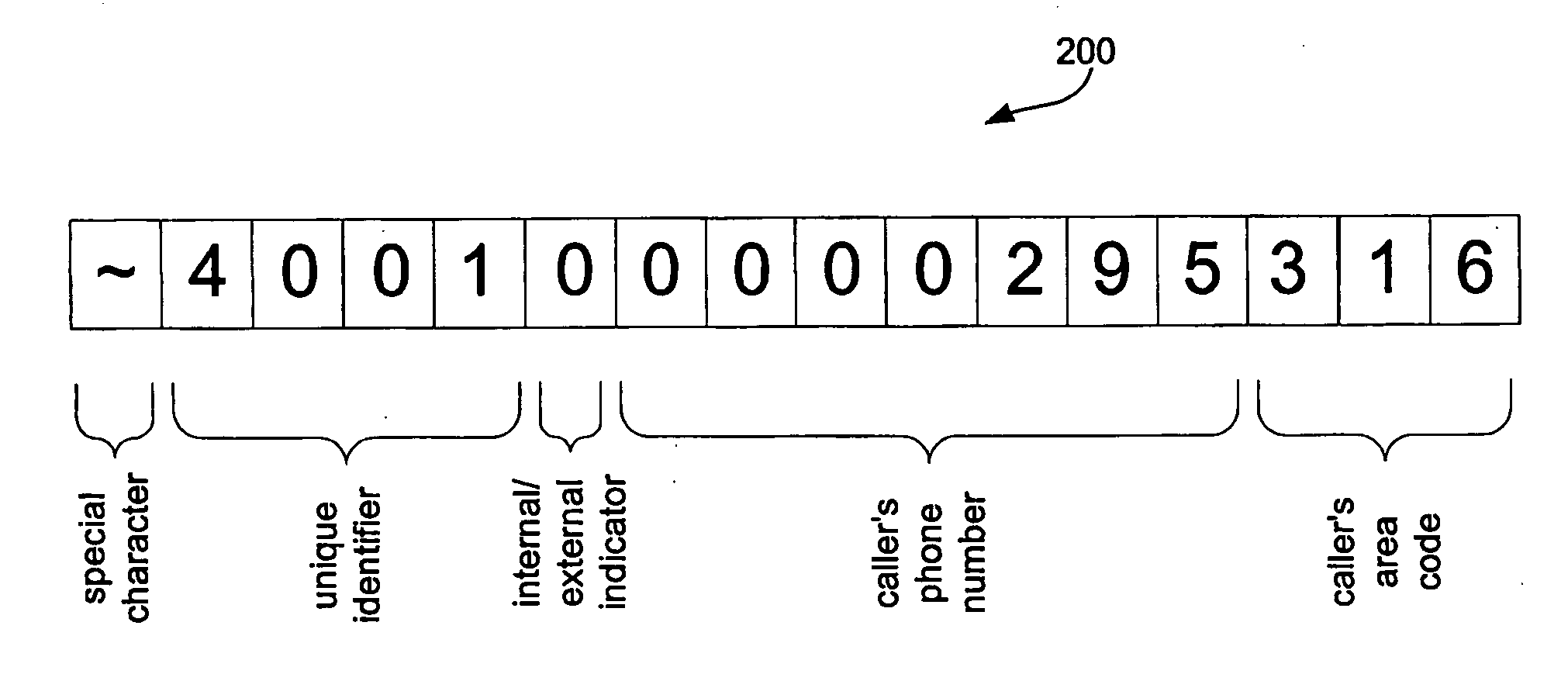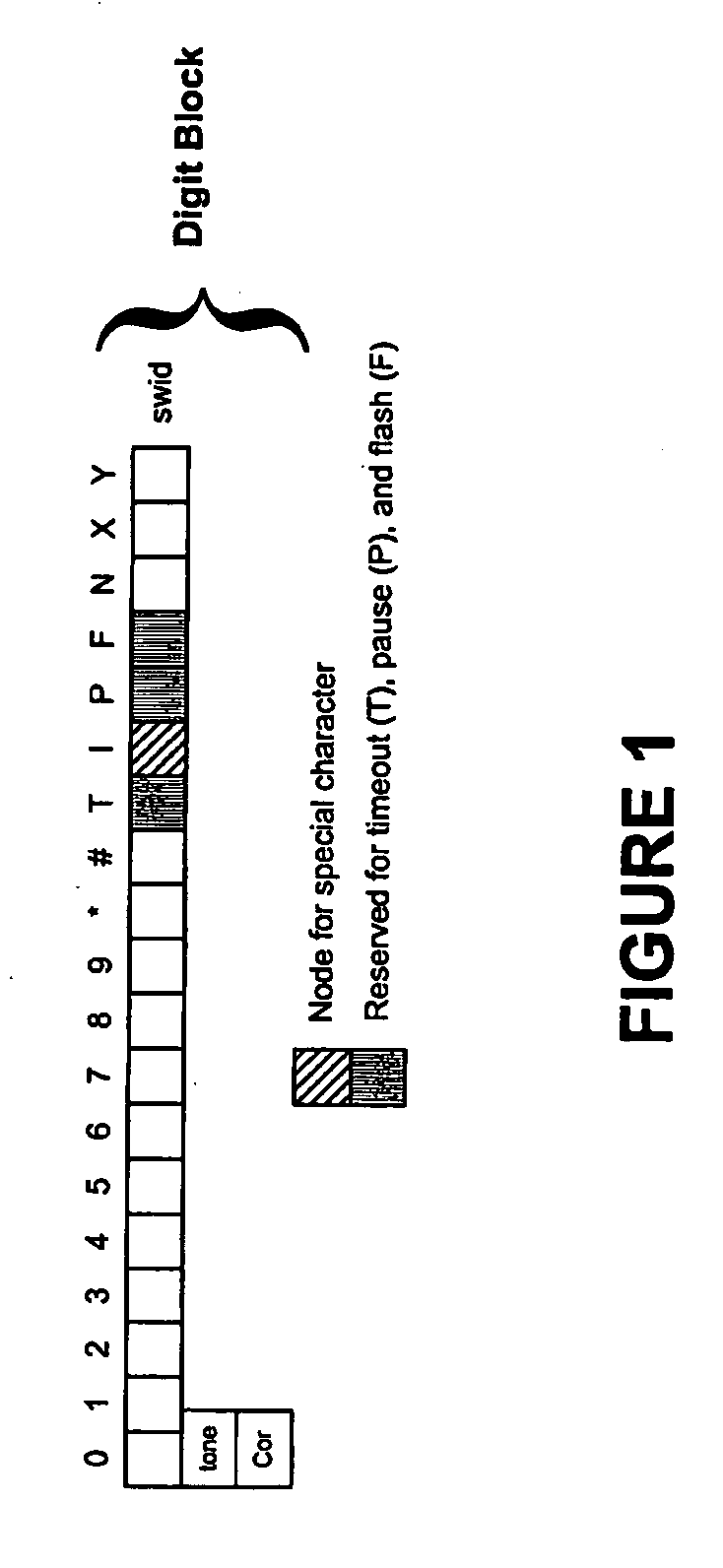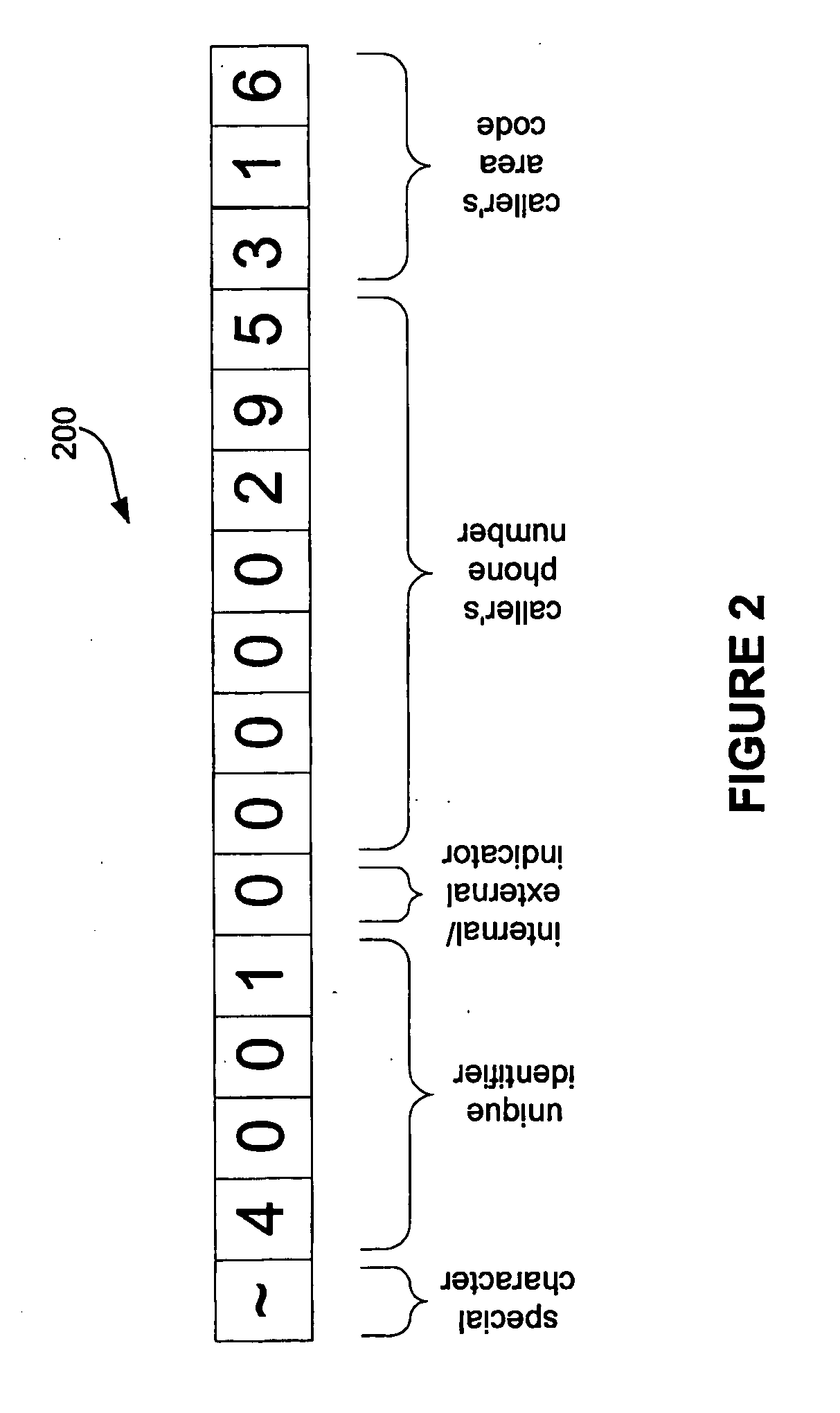Centralized personal directory scheme for communications networks
a technology of communication network and personal directory, applied in the field of personalized caller identification, can solve the problems of limited system, limited use of unique identifier in the form of caller telephone number, and inability to access the network at any time, so as to prevent collisions in data configuration/manipulation
- Summary
- Abstract
- Description
- Claims
- Application Information
AI Technical Summary
Benefits of technology
Problems solved by technology
Method used
Image
Examples
Embodiment Construction
[0016] Generally, the present invention provides a method and system for providing personalized caller identification including a centralized personal directory scheme with corresponding digit tree processing within a communications network. For purposes of clarity, the invention is described in terms of incoming calls only. However, it should be readily apparent that the present invention applies to both incoming and outgoing calls such that a personal directory may be used for outgoing calls as well as incoming calls
[0017] With reference to FIG. 1, a basic digit tree building block is shown and includes fields (nodes) for numeric digits 0 through 9 along with the “*” and “#” characters. To avoid increasing the storage requirements of digit string pools, the digit block shown also includes nodes for time out (T), pause (P), and flash (F). Three wildcard digits, N, X, and Y are allotted for other features not related to the present discussion. In accordance with the present inventi...
PUM
 Login to View More
Login to View More Abstract
Description
Claims
Application Information
 Login to View More
Login to View More - R&D
- Intellectual Property
- Life Sciences
- Materials
- Tech Scout
- Unparalleled Data Quality
- Higher Quality Content
- 60% Fewer Hallucinations
Browse by: Latest US Patents, China's latest patents, Technical Efficacy Thesaurus, Application Domain, Technology Topic, Popular Technical Reports.
© 2025 PatSnap. All rights reserved.Legal|Privacy policy|Modern Slavery Act Transparency Statement|Sitemap|About US| Contact US: help@patsnap.com



